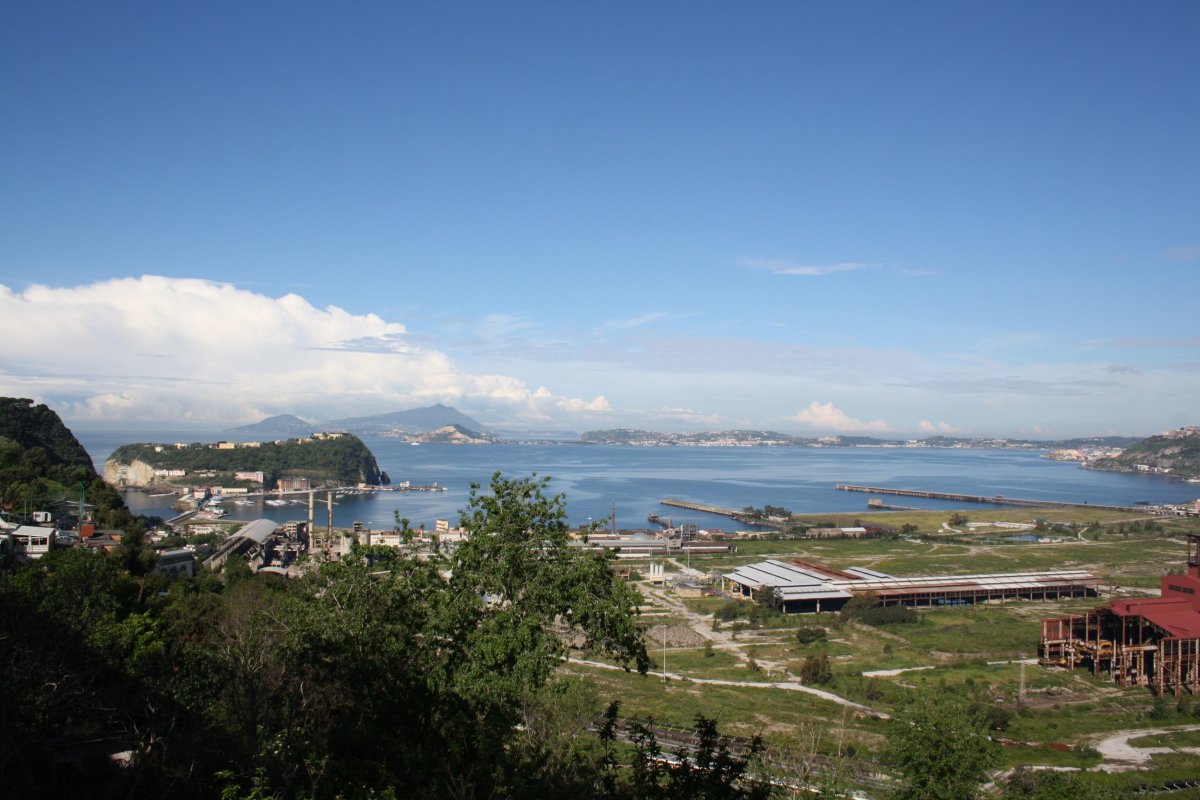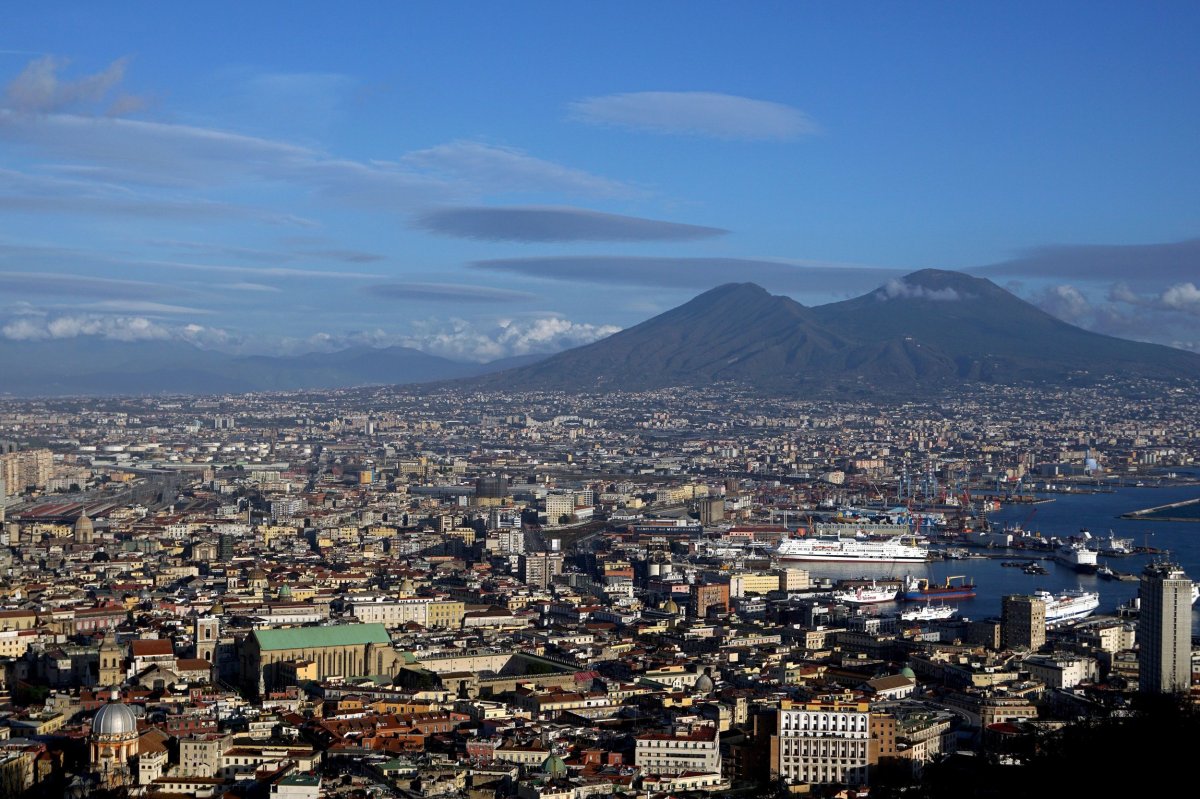One of the world's most dangerous supervolcanoes appears to be accumulating magma as it transitions to a pre-eruption state, a study has found. Scientists do not say that a large eruption is imminent—but they do suggest that current conditions at Campi Flegrei indicate one could happen at "some undetermined point in the future."
Campi Flegrei is one of the few active supervolcanoes in the world. It is located in southern Italy, about nine miles to the west of Naples, which is home to around 1.5 million people. The last time it erupted was in 1538—a fairly small event known as the Monte Nuovo eruption. However, 40,000 years ago, it produced a "super-colossal" eruption, which is just one down from the "mega-colossal" eruptions recorded at Yellowstone.
Over the last 60 years, the volcanic region—which is made up of 24 craters and edifices—has shown signs of unrest, and scientists have been studying it and monitoring it closely to better understand the changes taking place.
In a study published in Science Advances, a team of researchers led by Francesca Forni, from ETH Zurich in Switzerland, examined rock, mineral and glass samples taken from 23 eruptions at Campi Flegrei—including the two biggest from the last 60,000 years. By analyzing the elements within these samples, the researchers were able to construct a picture of what was happening before and after eruptions.
Their findings appear to show that magma is building beneath the volcanic system—and that it is entering a new caldera cycle. This could indicate that the volcano is moving toward a new phase that will result in a large eruption at the site, the team says. The study does not indicate that an eruption will happen soon.

Analysis of the elements suggest there were critical changes to the temperature and water content of the magma at certain points in the eruptive history of Campi Flegrei. Minerals in the magma were found to decrease over time, while water content increased. They found that this happened before the Monte Nuovo eruption.
The team notes that after the Monte Nuovo eruption, Campi Flegrei entered a "new phase" of inactivity. Since the 1950s, there have been three "major periods of unrest," raising concern that the volcano is reawakening. The movement of magma from depths of about five miles to 1.8 miles has previously been blamed for this unrest.
The latest findings suggest this is consistent with the presence of water-saturated magma in the upper crust, allowing for the build up of a huge magma reservoir. "We propose that the subvolcanic plumbing system at Campi Flegrei is currently entering a new build-up phase, potentially culminating, at some undetermined point in the future, in a large volume eruption," they conclude.
Luca De Siena, from the U.K.'s University of Aberdeen, who has previously published research on the Campi Flegrei system, commented on the findings: "At Campi Flegrei, an outstanding question is why we cannot see the plumbing systems of the volcano below 4-5km (2.5-3 mile) depths, as at Yellowstone caldera, for example," he told Newsweek.
"Forni et al. suggest that a large, highly-evolved, and relatively cold magma layer may be absorbing most of the energy we send down to reconstruct deeper structures. This problem is typical of sub-basaltic, oceanic settings, where deeper reservoirs are invisible to seismic imaging. Their findings open the possibility to model the effects of these magmatic layers on monitoring recording, thus allowing to reconstruct their shape and dimensions and eventually see below them."

Volcanologist Christopher Kilburn, from the U.K.'s UCL, who was also not involved in the study, said the results are consistent with observed changes that took plalce during past eruptions: "It thus provides an alternative interpretation to be tested against conventional ideas," he said.
"Should an eruption occur, the best guess is that it will have a size and behaviour similar to that seen during past 15,000 years or so—hence ranging from the size of the last eruption (Monte Nuovo, 1538, 0.02 cubic km) to something similar to the eruption of Vesuvius that overwhelmed Pompeii and Herculaneum (c. one cubic km). These are the scenarios being used to prepare mitigation plans.
"The paper changes tack in its final paragraph. Having argued that the 1538 eruption represents the squeezing out of magma from the vestige of a magma reservoir, it suggests that CO2 emissions indicate the possible replenishment of the reservoir and, thus, hints at the possible start of a build-up to a 'large-volume eruption.' This statement is speculative and does not depend on the preceding results."
Uncommon Knowledge
Newsweek is committed to challenging conventional wisdom and finding connections in the search for common ground.
Newsweek is committed to challenging conventional wisdom and finding connections in the search for common ground.
About the writer
Hannah Osborne is Nesweek's Science Editor, based in London, UK. Hannah joined Newsweek in 2017 from IBTimes UK. She is ... Read more
To read how Newsweek uses AI as a newsroom tool, Click here.








